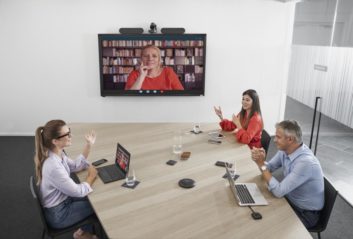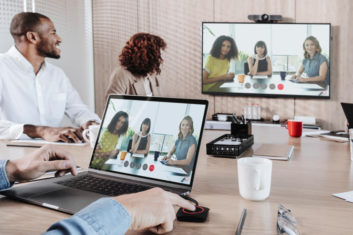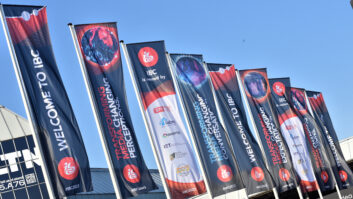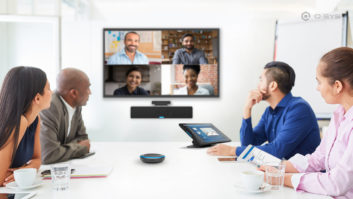In today’s intensifying battle for talent, working conditions must be considered as important as salaries to attract and retain employees. After a period of accelerated transition of work practices set in motion by the global pandemic, professional habits have evolved and are pointing to the work behaviours of tomorrow.
While hybrid work is here to stay, most employers are not yet equipped to fully support a hybrid work policy. This situation is impacting the job satisfaction of employees worldwide. According to the Barco Hybrid Meeting Survey, 79% of office workers prefer remote working over a full-time presence at the office. At the same time, 71% express emotional frustrations linked to technical hurdles in hybrid meetings. Barco calls this the Hybrid-Working Paradox.
 Increased levels of employee stress levels have a huge impact on their happiness at work, but much of this can be solved or avoided by dedicated technological solutions: a clear opportunity for AV. This sends a clear message to employers: the integration of hybrid working technologies in the daily job is a must.
Increased levels of employee stress levels have a huge impact on their happiness at work, but much of this can be solved or avoided by dedicated technological solutions: a clear opportunity for AV. This sends a clear message to employers: the integration of hybrid working technologies in the daily job is a must.
WORKPLACE IMPACTS
Microphones shouting at each other from different computers in meeting rooms; shared slides not appearing on the screen when you’re supposed to be doing an important presentation; a poor wi-fi connection, etc. These frustrations may seem trivial at first glance, but after nearly two years of hybrid working they are having an impact on employers and employees worldwide.
Among the many technical issues, Barco notes that 48% wrestle with cables, with 58% experiencing difficulties with sharing screen content with other participants. On an emotional level, 31% of respondents complain of failing to capture body language and social cues during Zoom meetings. This coincides with the inability to see (60%) or to hear (62%) other people properly. The combination of both emotional and technical challenges leads to a notable decrease in job satisfaction.
“The most complicated part for employees working hybrid is certainly the lack of control over the technology and the technical problems that arise from it,” explains Elke Van Hoof, psychologist at VUB (Vrije Universiteit Brussel). “Communication is the foundation of human and professional relationships. If these channels are broken, or at least damaged, this creates many misunderstandings as well as many frustrations. It is therefore logical to think that problems related to internet connections, noise, etc. have repercussions on the stress level of employees. It is therefore urgent for employers to address these frustrations and put in place the necessary needs of employees to maintain a healthy balance between work at home and the tools available to achieve this.”
PRODUCTIVITY RISE
One of the main fears of employers when it comes to hybrid working, revolves around the productivity of their teams. The Barco Hybrid Meeting Survey however, proves them wrong, with 44% of respondents noting that their personal productivity has markedly gone up by working remote. Only a small minority, 12%, are negative about it, whilst 43% say that it adds to the overall productivity of the company.
Of course, the time otherwise lost by commuting could partly explain this. But on a more qualitative note, asked about collaboration, 74% mention either a neutral, a positive or even a very positive experience. And then there’s the deeper question about employee satisfaction. Because happy workers are more productive too.
What employees need besides the proper equipment, are unambiguous rules and regulations about working from home, says Barco. Who can, who can’t, and why? On what condition? What is the preferable mix between remote working and a presence at the office? How about financial arrangements, like the contribution in heating, electricity, internet and home office peripherals? Seemingly unsubstantiated or erratic decisions cause a lot of stress. It’s in the best interest of both parties to install a transparent hybrid working policy. But the Barco Hybrid Meeting Survey shows that almost 60% of all companies are lacking exactly this. In a job market in full turmoil, most companies are not ready and this could lead to a brain drain. And indeed, judging by the respondents’ intentions, the study confirms the threat is real.
MEETING BAROMETER
The Barco Meeting Barometer has dropped significantly after almost two years of Covid. In September 2020, employees were still carefully positive about meetings, resulting in an index of +17. Last May, the score descended to -25, uncovering a growing frustration with virtual meetings in general. And the Barco Meeting Barometer now plunges to a stunning -38 mainly caused by a high number (71%) of meeting participants experiencing hybrid meetings as stressful.
 The Barco Hybrid Meeting Survey shows a clear correlation between the level of hybrid work issues and the intention to leave the company. An alarming 30% of respondents declare that they consider switching for a company with well-defined policies regarding hybrid working. Clear policies, or the lack thereof, play a role in 73% of all cases. Moreover, 44% of employees who encounter technical issues during 1 out of 2 hybrid meetings, think about leaving the company within 6 months. Younger employees and middle management even more so than others. To many, enabling and encouraging hybrid working models is an indicator of a well thought-out and considerate HR policy. And the contrary is a reason to leave.
The Barco Hybrid Meeting Survey shows a clear correlation between the level of hybrid work issues and the intention to leave the company. An alarming 30% of respondents declare that they consider switching for a company with well-defined policies regarding hybrid working. Clear policies, or the lack thereof, play a role in 73% of all cases. Moreover, 44% of employees who encounter technical issues during 1 out of 2 hybrid meetings, think about leaving the company within 6 months. Younger employees and middle management even more so than others. To many, enabling and encouraging hybrid working models is an indicator of a well thought-out and considerate HR policy. And the contrary is a reason to leave.
“Through the implementation of hybrid work, many adaptations have been made by employees around the world, says Van Hoof. “One of the most stressful aspects has certainly been the uncertainty associated with this new way of working. Now, after more than 18 months of the pandemic, employees feel the need to regain control of their well-being. If their company does not make a firm decision about the future of hybrid working and does not put policies in place to allow both live and online working, this will result in stress and anxiety, which could result consequently in a lack of motivation and interest in their current employer.”
WORK-LIFE BALANCE
Finding a better balance between professional and personal life is one of the key reasons why hybrid meetings are having such a success among employees worldwide. The Barco Hybrid Meeting Survey also probed into the way hybrid working affected people’s state of mind. Regarding the sense of well-being, only 10% express outspoken negative feelings. Most reactions range from fine to strongly positive. But the result that stands out most is the improvement to work-life balance, with 50% declaring they are better off. Only 10% don’t agree. Admittedly, much depends on the personal situation at home, although a company’s physical residence still has a pivotal role to play.
Even if the physical office always remains the place for people to meet, the future of work is hybrid, according to Barco. The company has been looking into the main work-home frictions, and reckons its ClickShare Conference technology smooths out the most important technical hurdles.
“Over the last months, like everyone else, we were faced with an unprecedented change,” explains Barco CHRO Anthony Huyghebaert. “It was therefore important for us to make sure working from home was as comfortable as working from the office, and vice versa. To do so, we decided to update our technological equipment and make life easier for our employees across the country. Today, we are thrilled to see that this has allowed a positive experience at home and that most employees have seen their work/life balance improve.”







